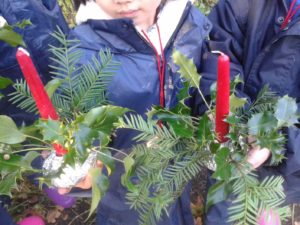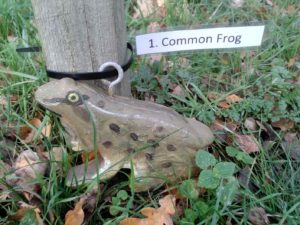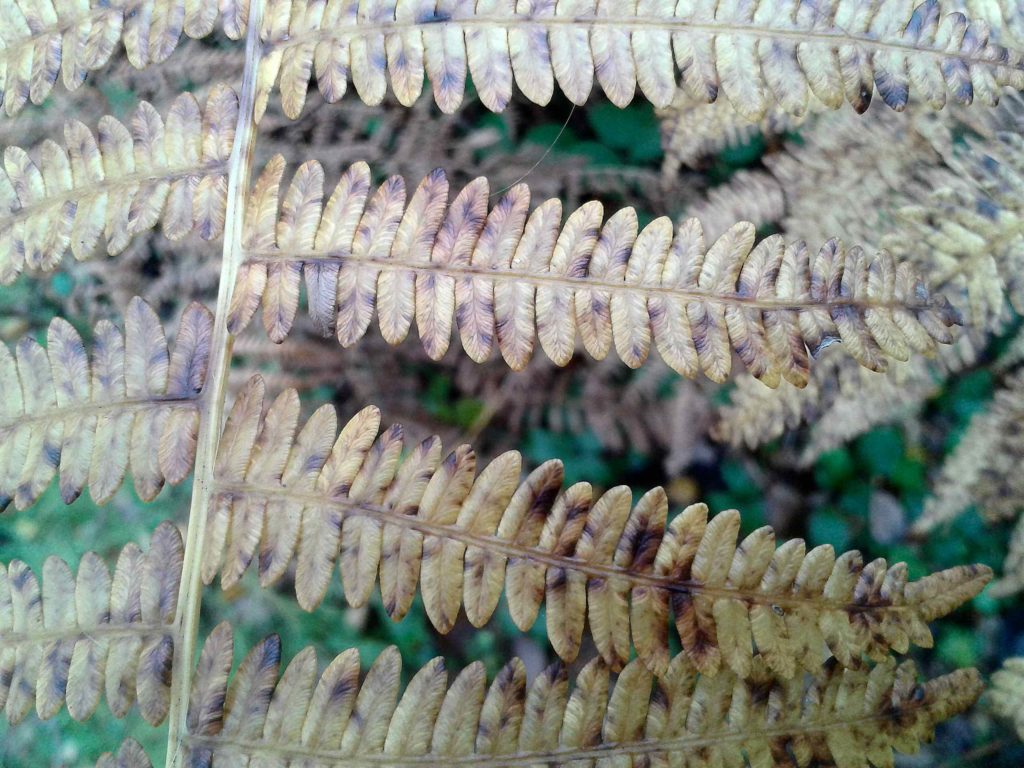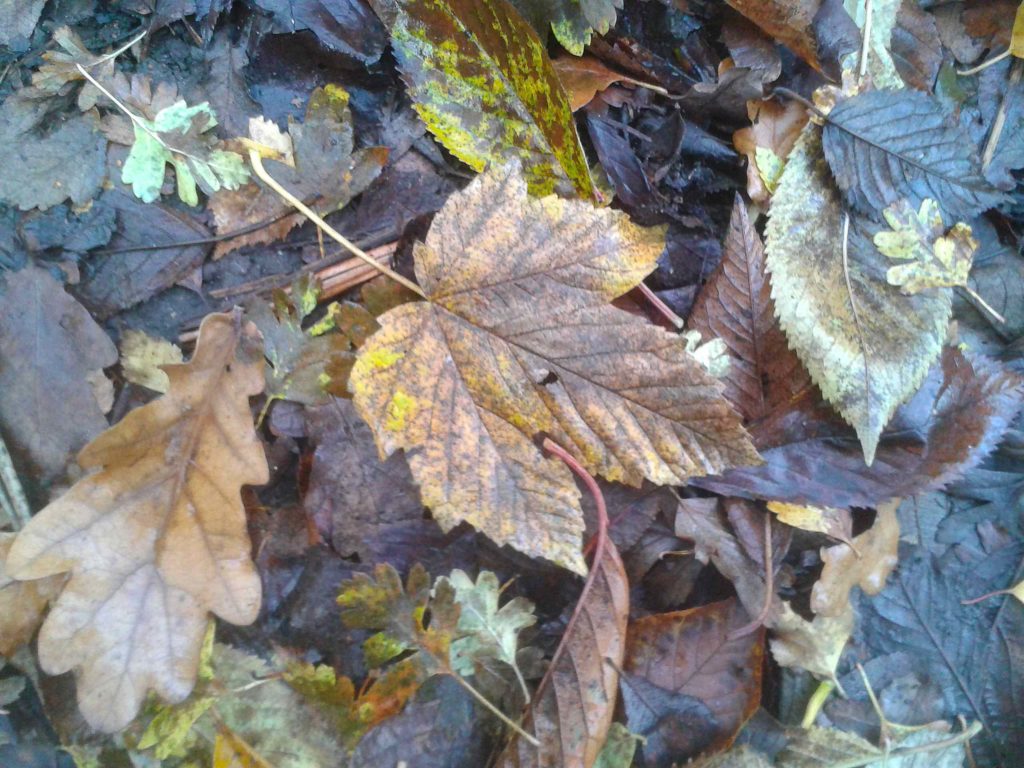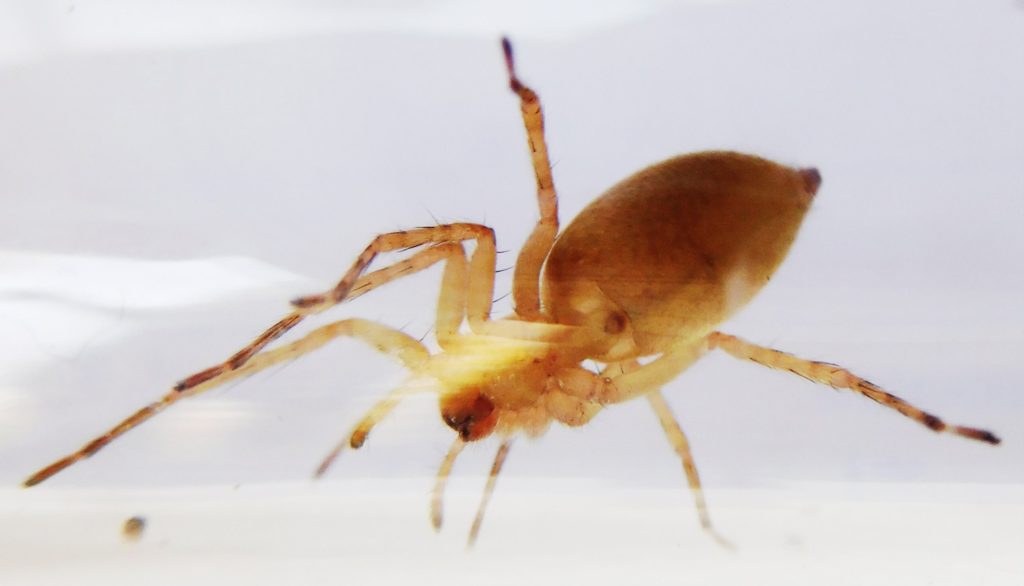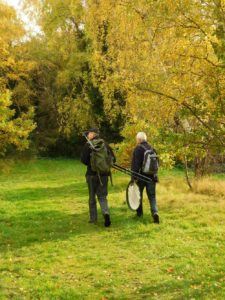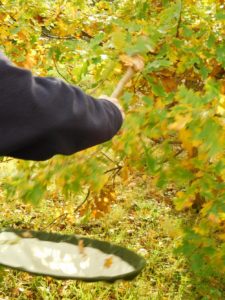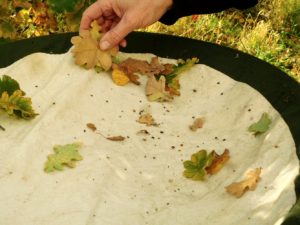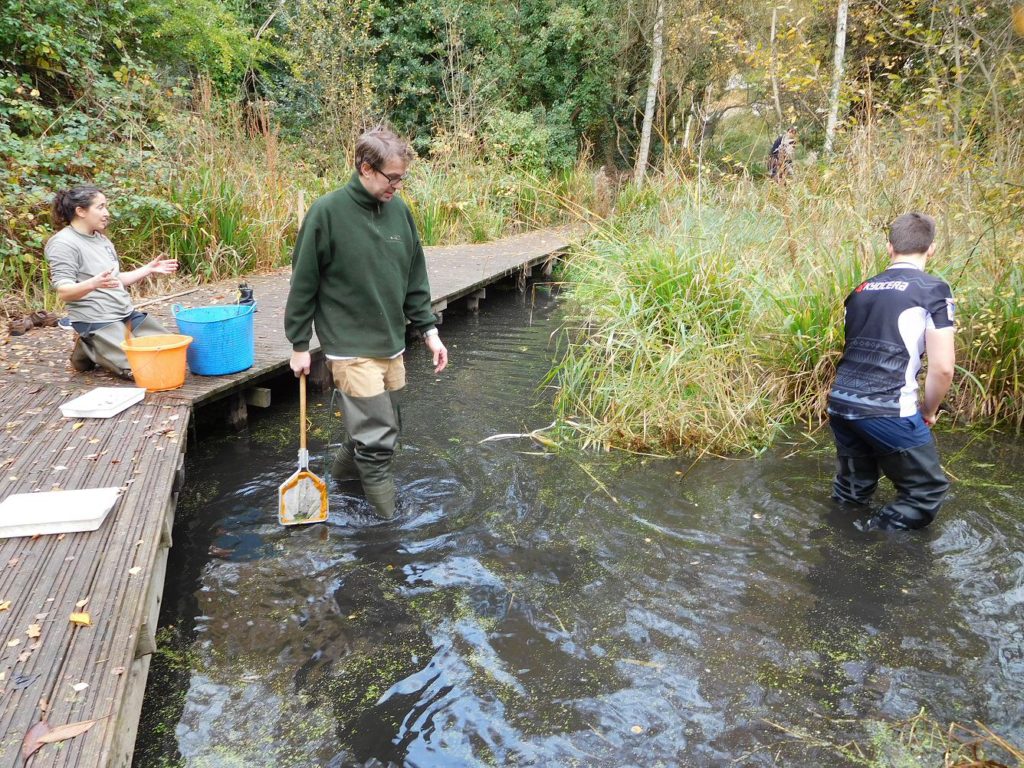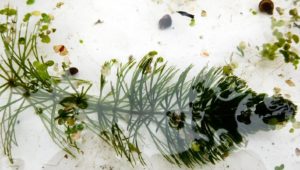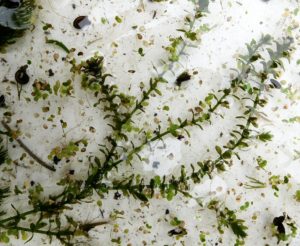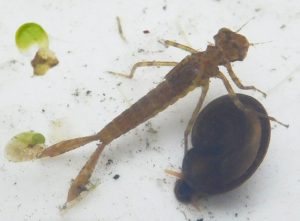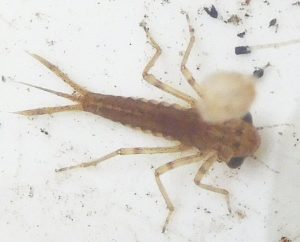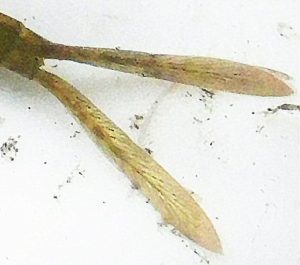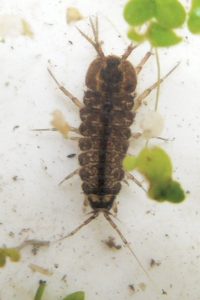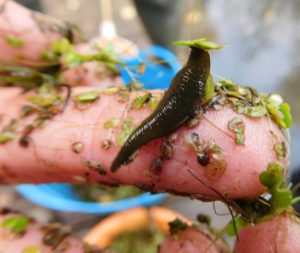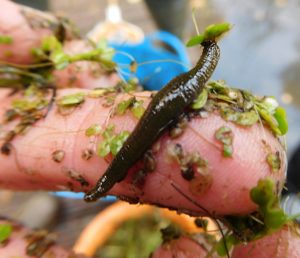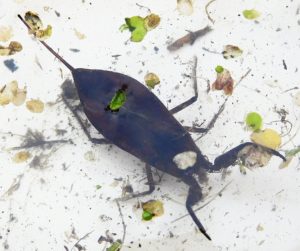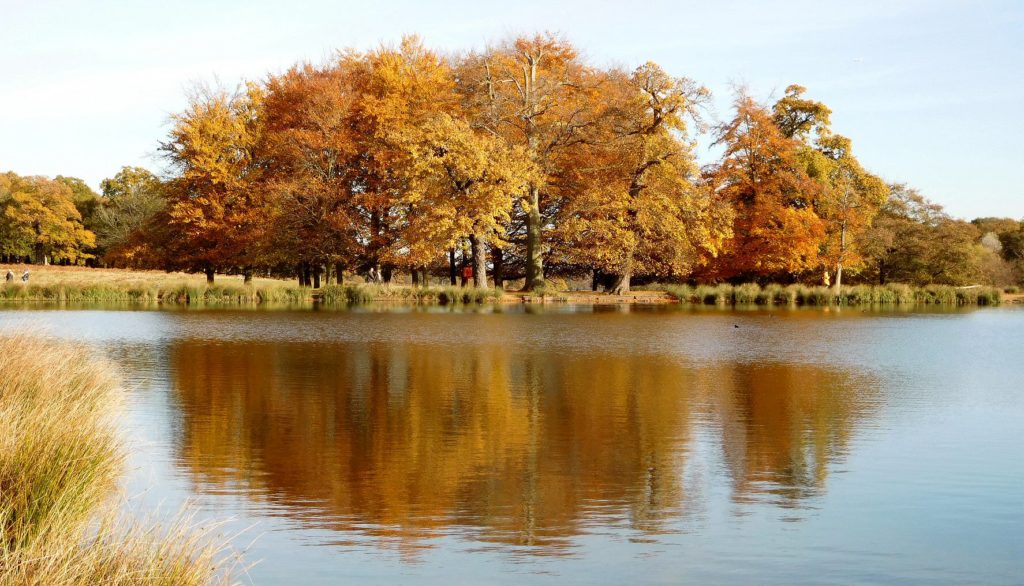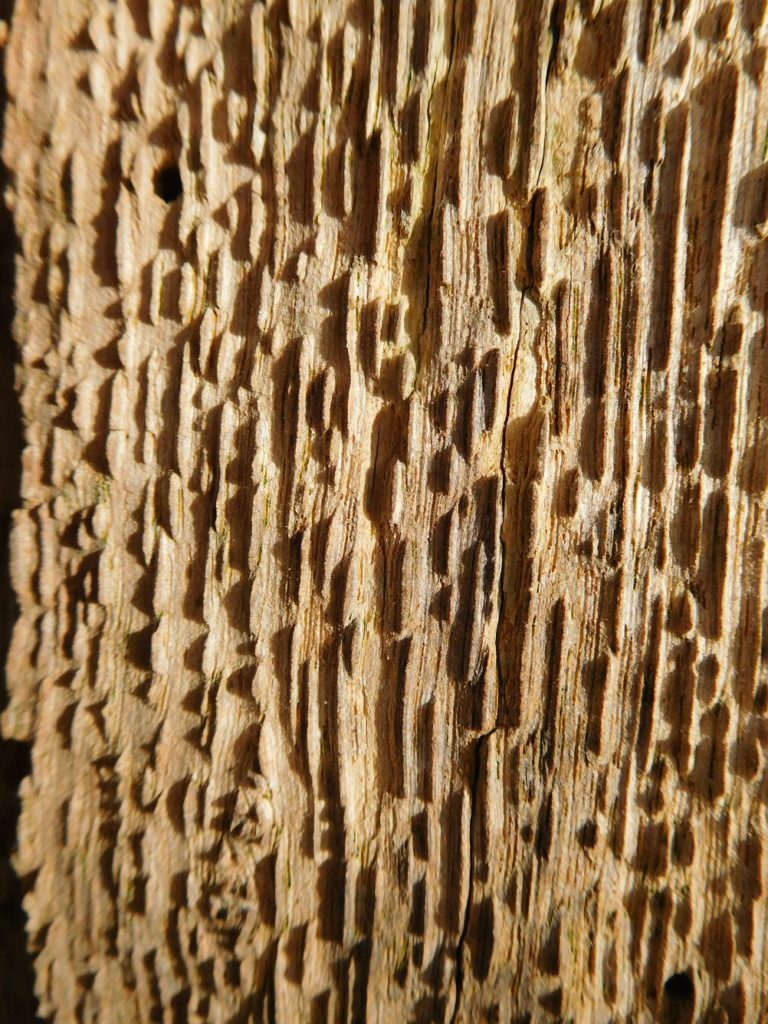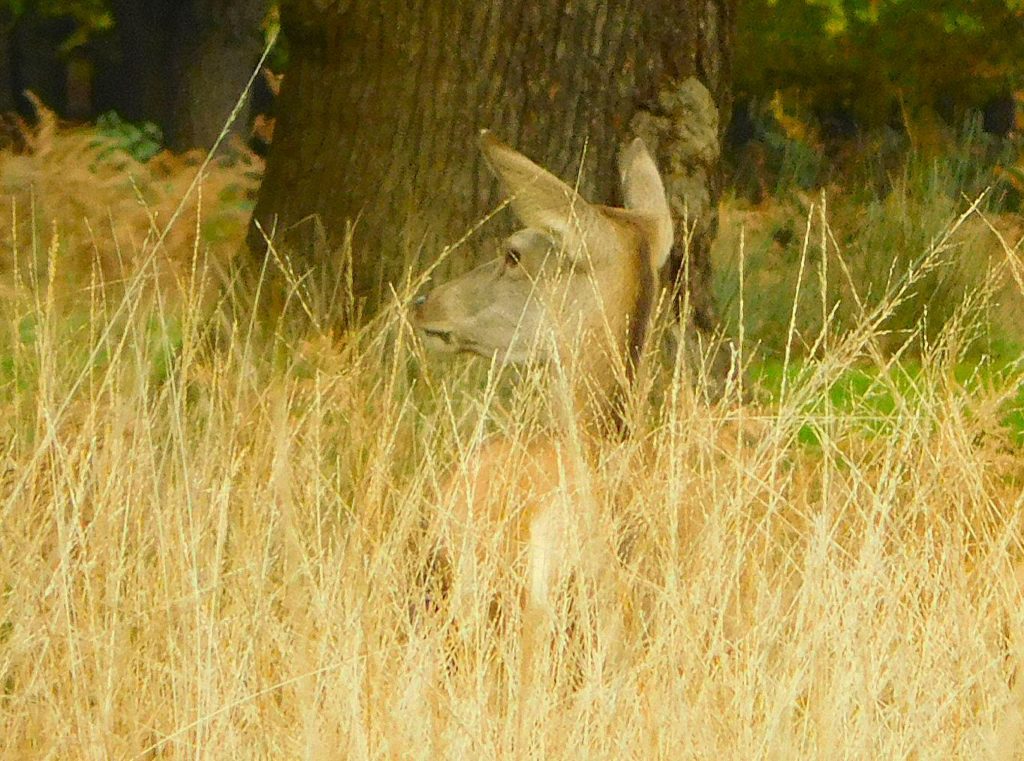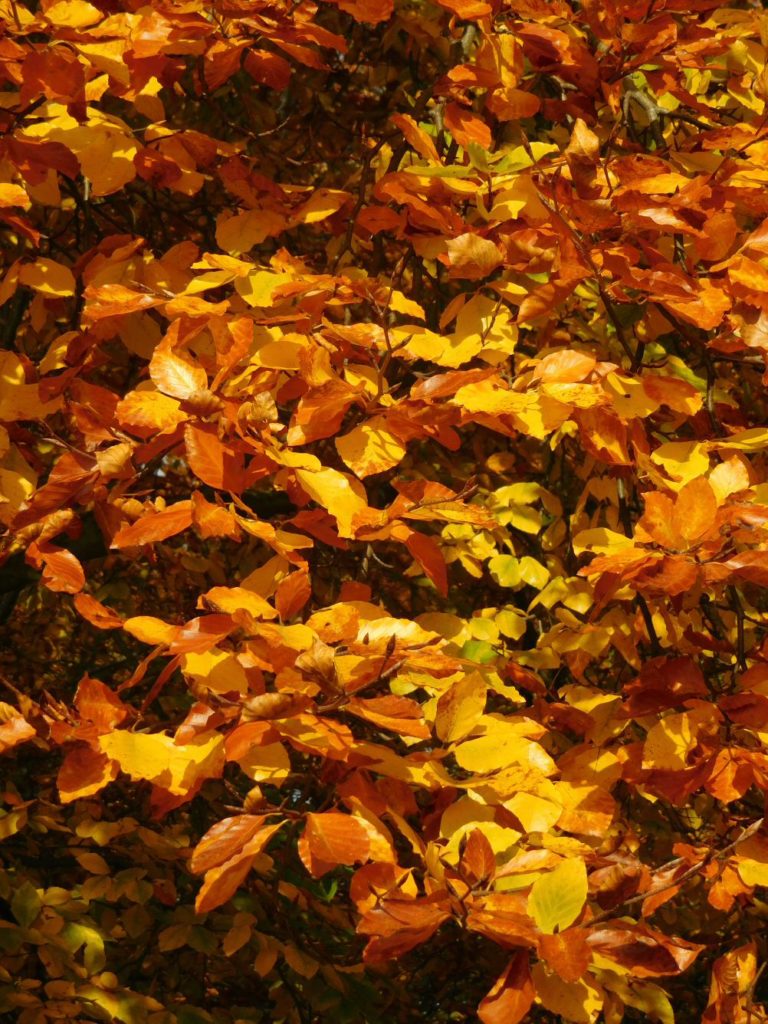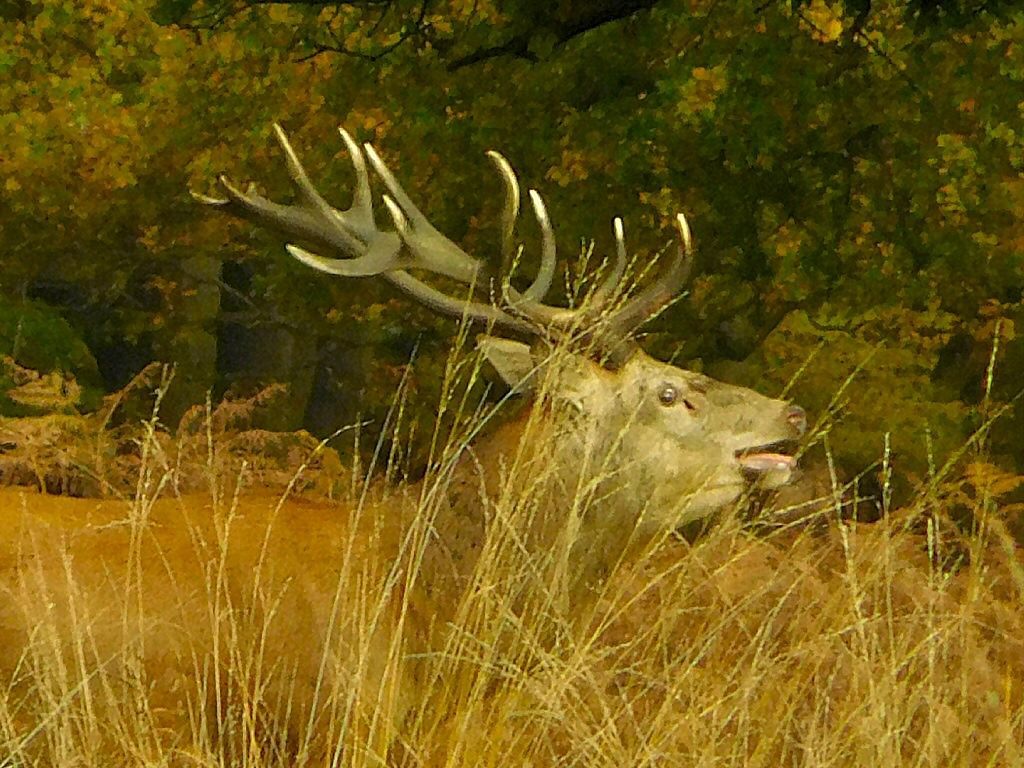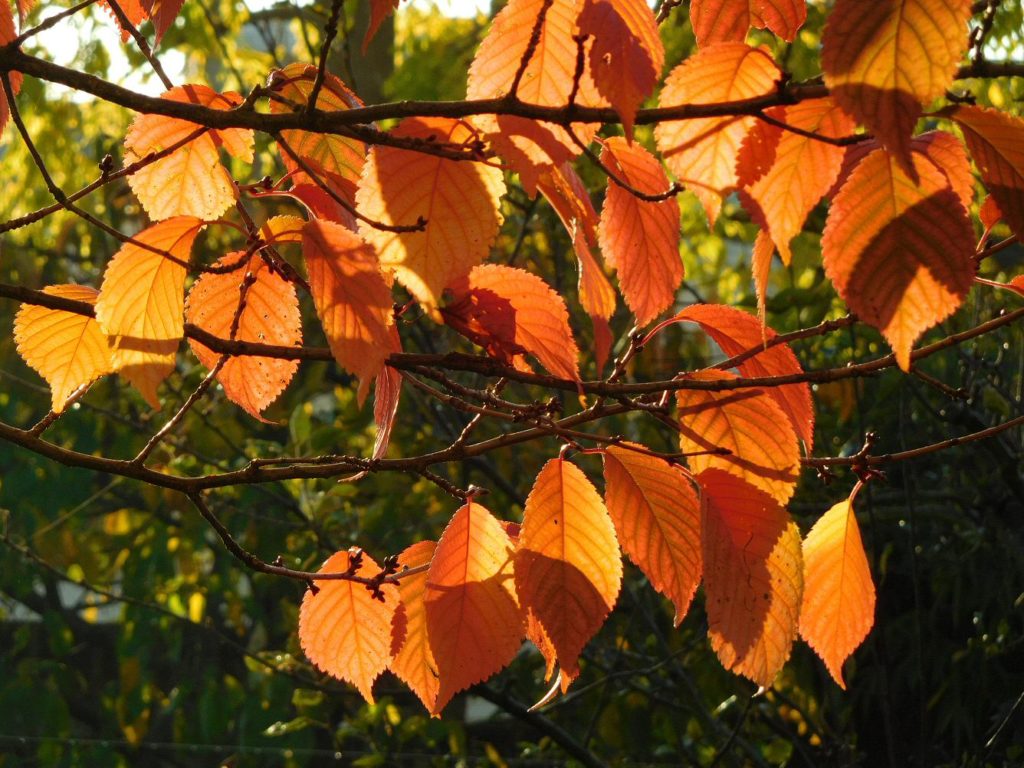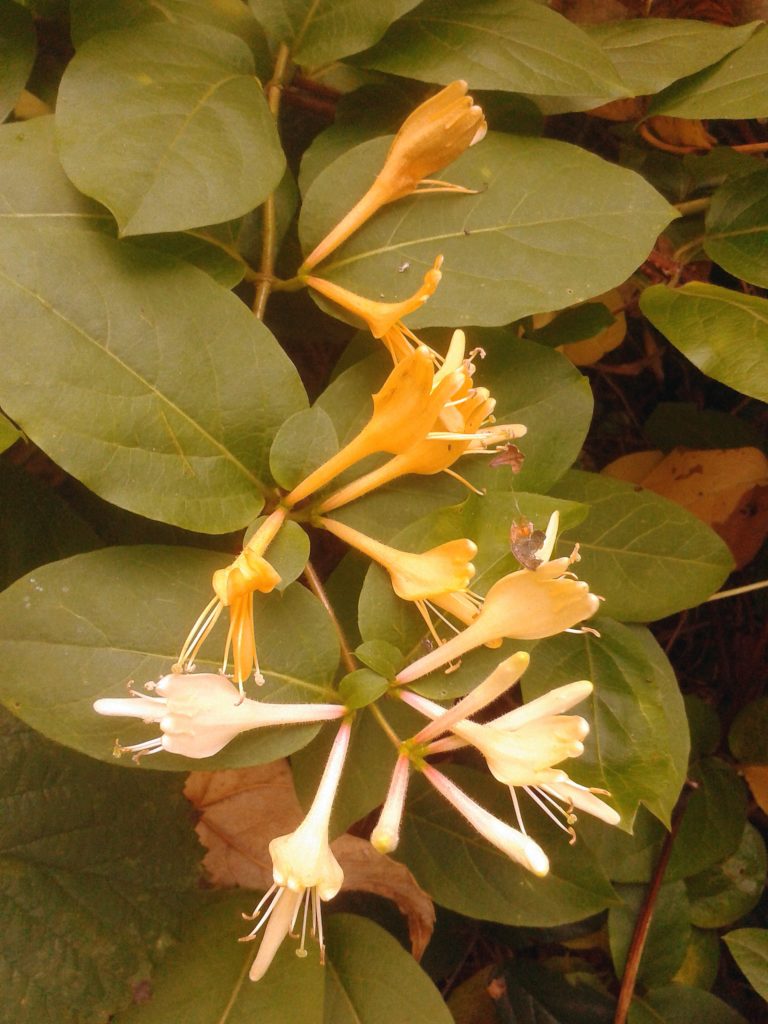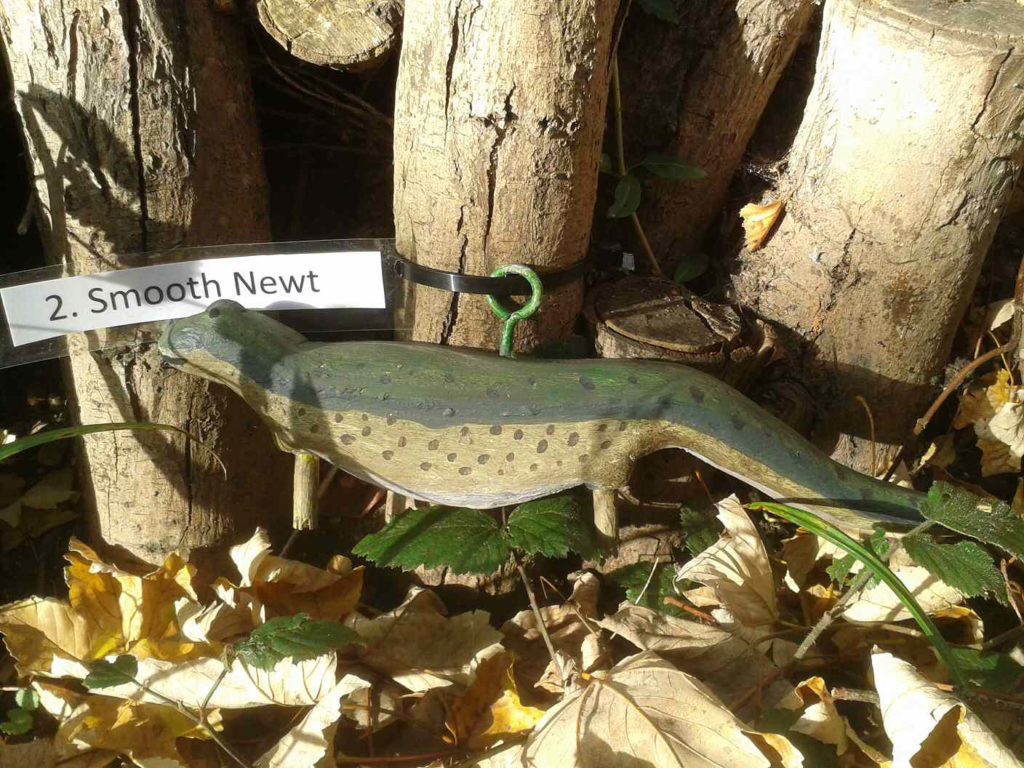
Netty found some dusty but very well-made wooden animals, complete with attachment rings, evidently designed for use on a Nature Trail. She repainted all of them and we hung them around the reserve. The camouflaged animals – the newt and the frog – seemed to ‘work’ the best. We hope the children will have fun going around with their parents to find them. One or two may be quite difficult!
It wasn’t all wooden animals. As it happens, we saw some of the real things, November or not.
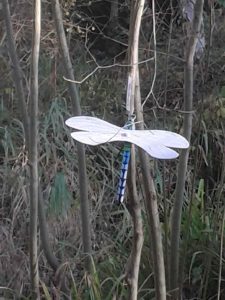
[Spoiler alert!] We went down to the pond to affix the Dragonfly, and spotted a small limp orange shape floating apparently lifeless at the surface…
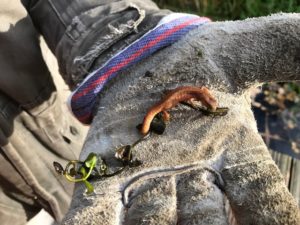
Then we started mowing the Ramp Meadow with its remarkably fine stand of Evening Primroses …
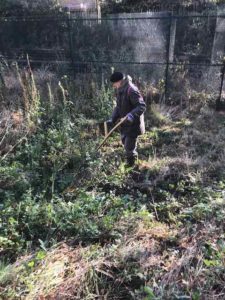
… and found a real frog, escaping the scythes and boots.
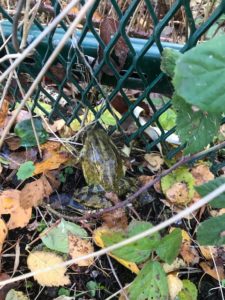
The Forest School decorated Christmas Candles very gracefully.
